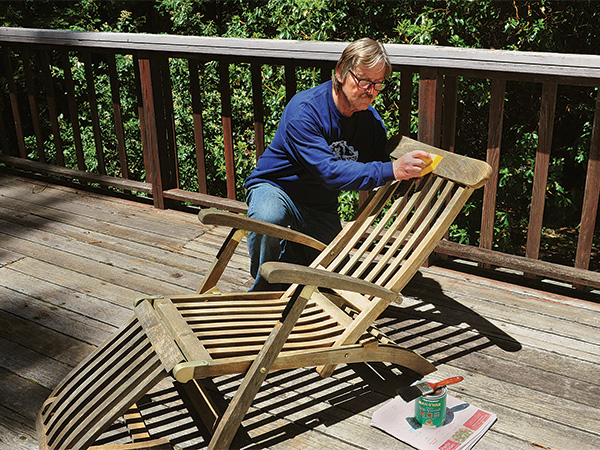
Can you tell me if I have to use treated wood when making projects for outside? Can I use regular lumber and paint, stain, or seal it somehow so the weather will not destroy the wood?
Rob Johnstone: I live in an older neighborhood in Minneapolis. My house, and many surrounding mine, are over 100 years old and still have their original wood siding (looking great by the way). So the answer is yes … you can protect wood effectively from the elements with proper painting or staining. (One thing we are overly blessed here in Minnesota is extreme weather … we know elements!) You do not have to use treated material, but the main reason you might not want to use treated lumber … concern about contact with the chemicals in the treated lumber … is ameliorated by sealing the piece in paint. Life is full of such little ironies. You will avoid contact with treated saw dust by sticking with more traditional outdoor lumber species such as white oak, cedar, Spanish cedar, and one I would like to try … cypress.
Simon Watts: Treated lumber has been treated with poison so you don’t want to sit on it–and certainly not eat off it. Start with a durable wood such as cedar or redwood and make sure there are no surfaces or pockets where water can collect. Instead of paint, why not use a good grade of marine varnish–it has been formulated to resist sun, wind and water.
Michael Dresdner: No to both questions.
Not only do you not have to use treated wood, it is a bad idea for two reasons. Most treated wood still contains CCA (chromated copper arsenic), and the woodworking dust is quite dangerous. You should avoid handling it as much as possible, and certainly avoid breathing any sawdust. Furthermore, such wood is not appropriate for skin or food contact, so patio furniture is out. It is one thing to use treated wood for roof shakes, fence posts, and deck underpinnings, and quite another to use it to come in regular contact with humans.
It is also inadvisable to ask a finish to change the nature of wood, and it simply won’t do it. Painting may prolong the inevitable somewhat, but in the end, the best choice is appropriate wood. Choose stable wood that has natural resistance to bugs, rot, checking, and distortion. Many woods do quite well in exterior settings, including redwood, cedar, mahogany, teak, and ipe. Finishing is optional on all of these woods, and that’s a good thing, since finishes will not bar the ravages of weather, nor block the path of determined bugs. As the adage goes, you can’t make a silk purse of a sow’s ear.
Here’s a worthwhile tip, if you are making patio furniture, that will help even with exterior appropriate woods. Any part of the feet that sit directly on the deck or ground will suck up and often sit in water. This is especially damaging when it is end grain, which the bottoms of chair posts and table legs often are. Before finishing, pot the bottoms of the feet with epoxy. Impregnating the end grain with epoxy will prevent water from wicking up, delaminating the finish, and splitting or rotting the feet.





